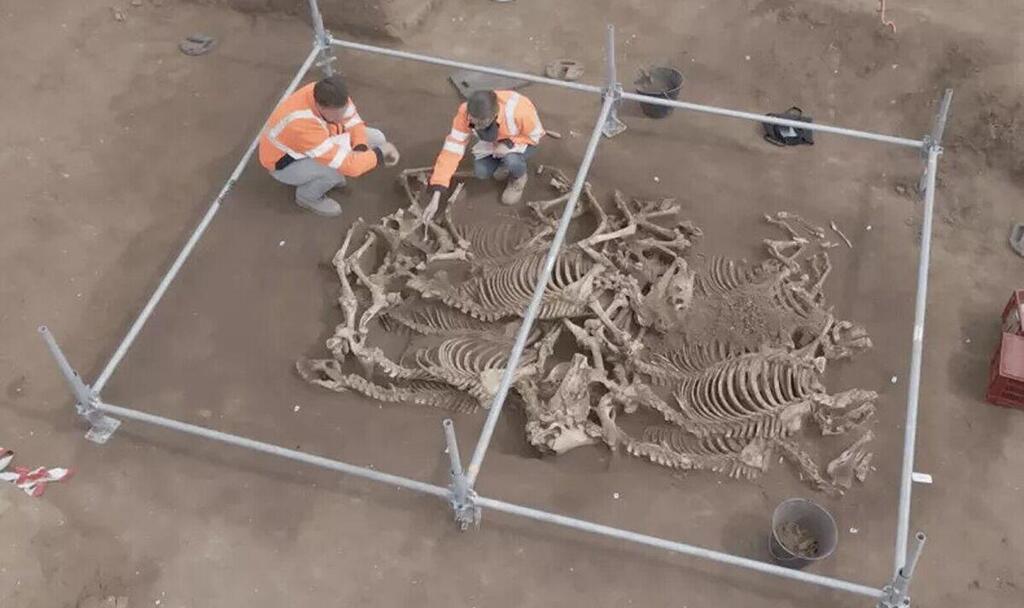Archaeologists in France discovered ancient pits containing skeletal remains of over two dozen adult male stallions, some over 4 feet high, carefully buried on their right sides facing south, potentially as part of a sacrificial ritual dating back to 100 B.C. to A.D. 100.
The excavation site in Villedieu-sur-Indre, France, also revealed remains of medium-sized adult dogs buried with their heads facing west, suggesting they may have been part of the same ritual.
1 View gallery


Horse burials from 2,000 years ago discovered in France
(Photo: Francois Goulin, INRAP)
Radiocarbon dating showed the horses lived between 100 BC to 100 AD, and they were all found lying on their right sides, heads to the south, organized in two rows and on two levels.
Researchers believe the horse and dog burials may be linked to a Neolithic burial site in Auvergne with ancient burials and artifacts from a mass sacrifice, and potentially to the Gallic Wars based on a similar horse burial site at Gondola.
The site contained nine burial pits with 28 horse remains, with two pits fully excavated, one containing 10 complete horse skeletons of small adult males.
The horses were carefully placed on their right sides, facing south, suggesting prompt burial after death.
Experts are unsure how the horses died, considering battle or ritual sacrifices as possibilities.
The researchers suggest the horses' deaths may be connected to the Gallic Wars, or that they were part of a complex ritual sacrifice.
This article was written in collaboration with Generative AI news company Alchemiq
Sources: Newsweek, CBS News, CNN, The Guardian, Le Monde, Times of India, Archaeology.org, Express

